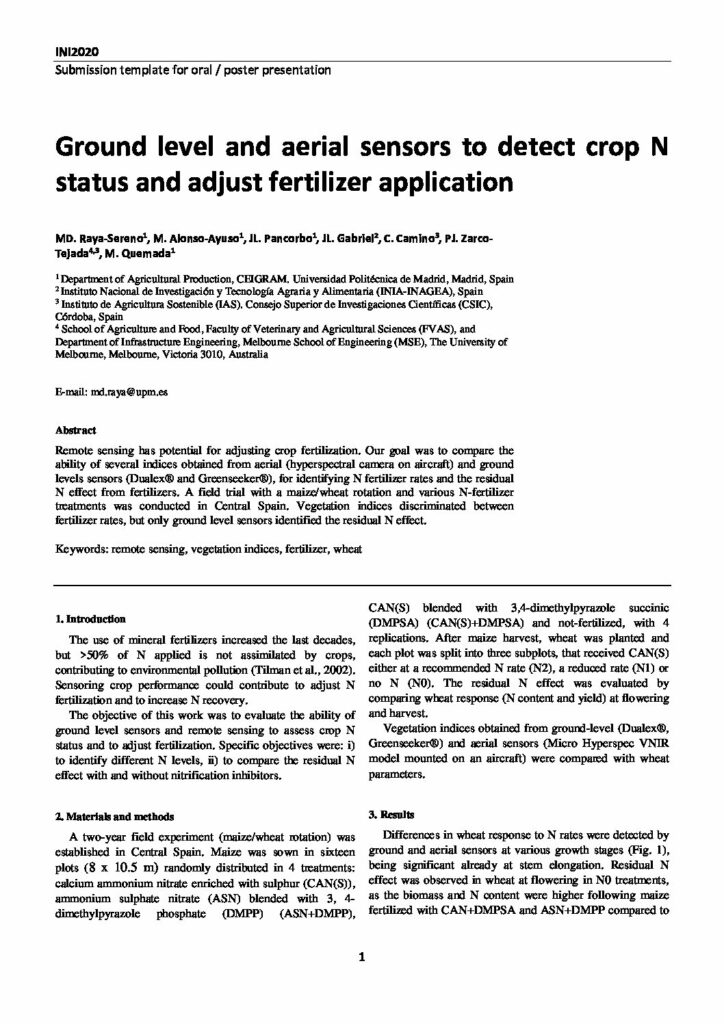Ground level and aerial sensors to detect crop N status and adjust fertilizer application

Remote sensing has potential for adjusting crop fertilization. Our goal was to compare the ability of several indices obtained from aerial (hyperspectral camera on aircraft) and ground levels sensors (Dualex® and Greenseeker®), for identifying N fertilizer rates and the residual N effect from fertilizers. A field trial with a maize/wheat rotation and various N-fertilizer treatments was conducted in Central Spain. Vegetation indices discriminated between fertilizer rates, but only ground level sensors identified the residual N effect.
The use of mineral fertilizers increased the last decades, but >50% of N applied is not assimilated by crops, contributing to environmental pollution (Tilman et al., 2002). Sensoring crop performance could contribute to adjust N fertilization and to increase N recovery. The objective of this work was to evaluate the ability of ground level sensors and remote sensing to assess crop N status and to adjust fertilization. Specific objectives were: i) to identify different N levels, ii) to compare the residual N effect with and without nitrification inhibitors.
